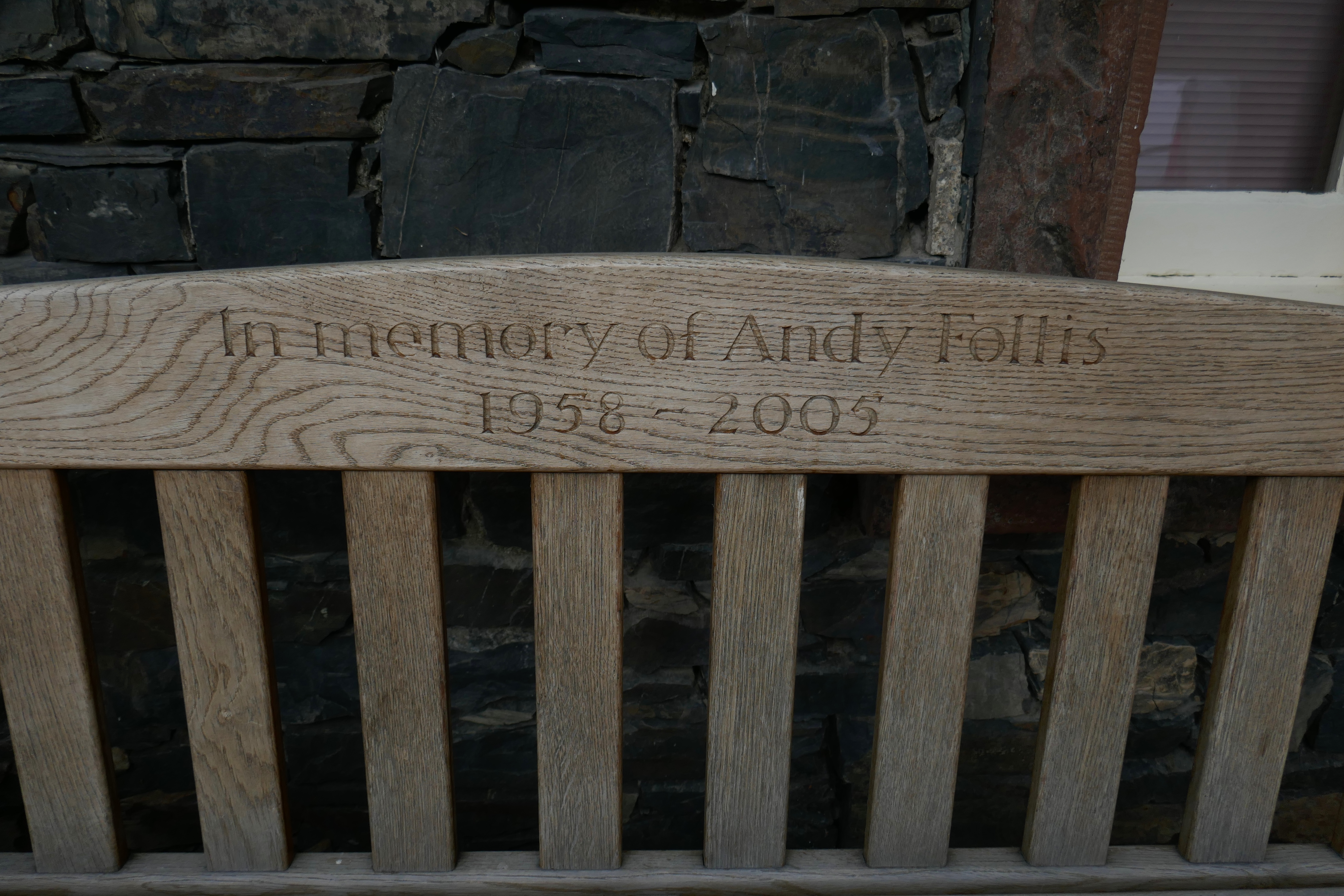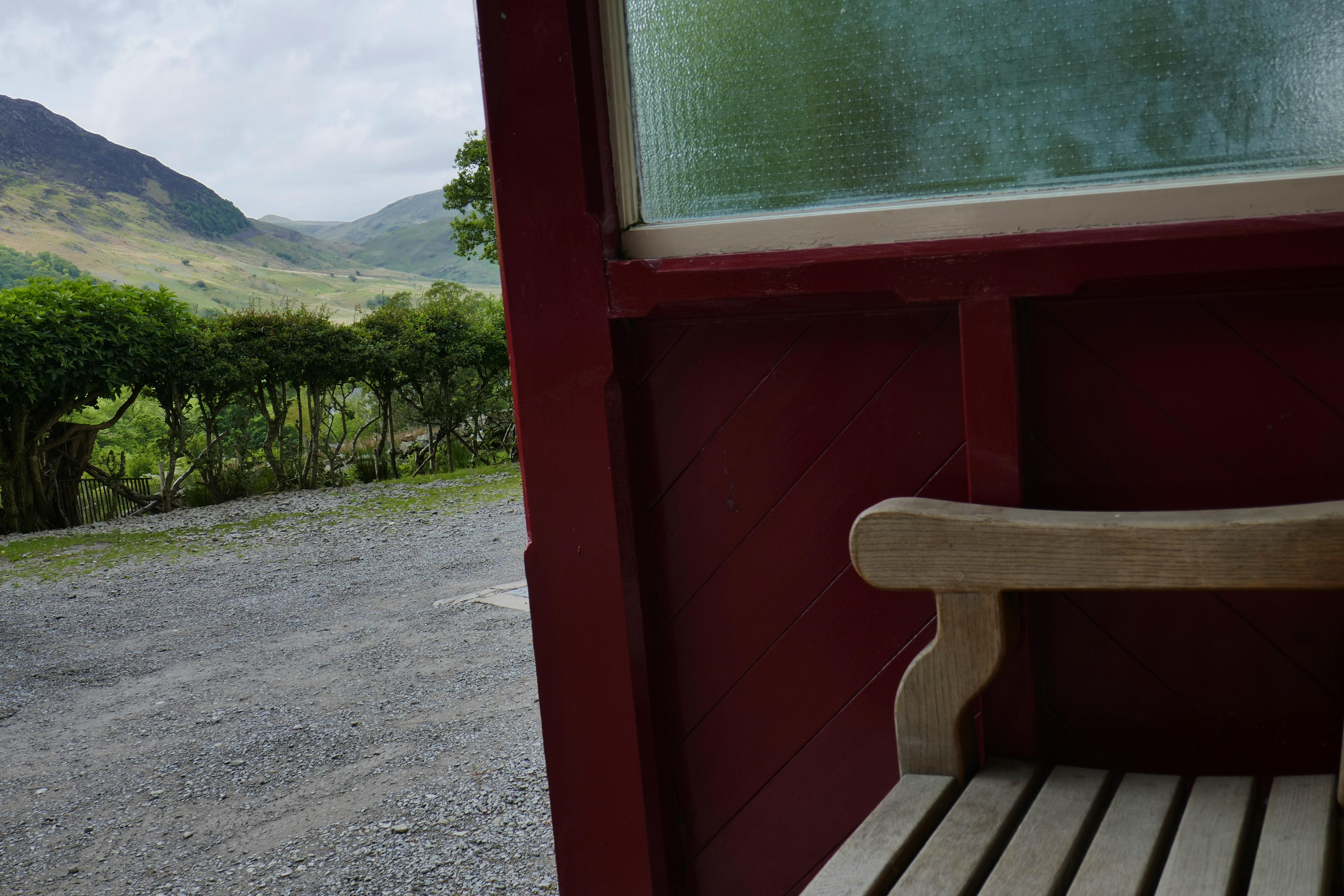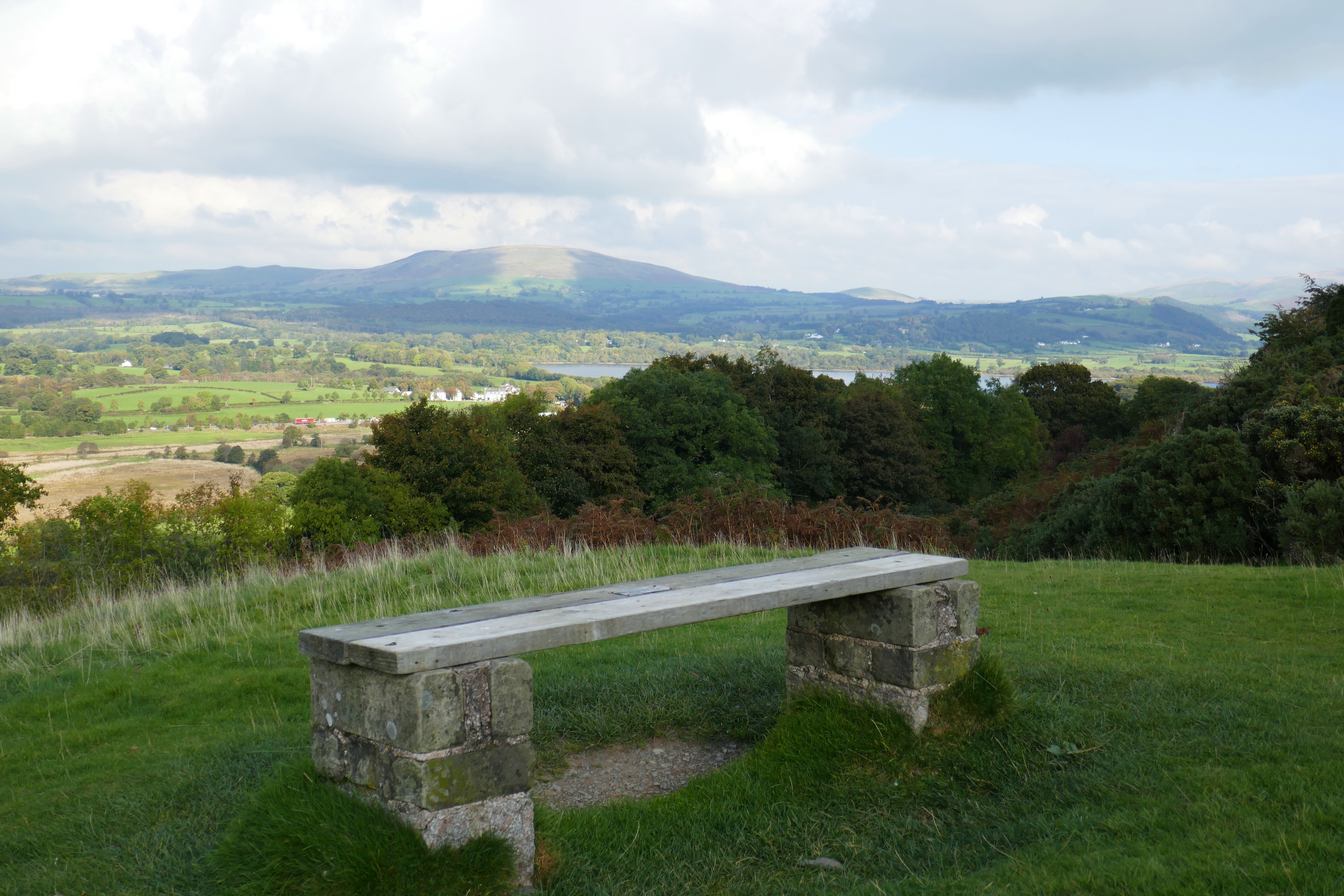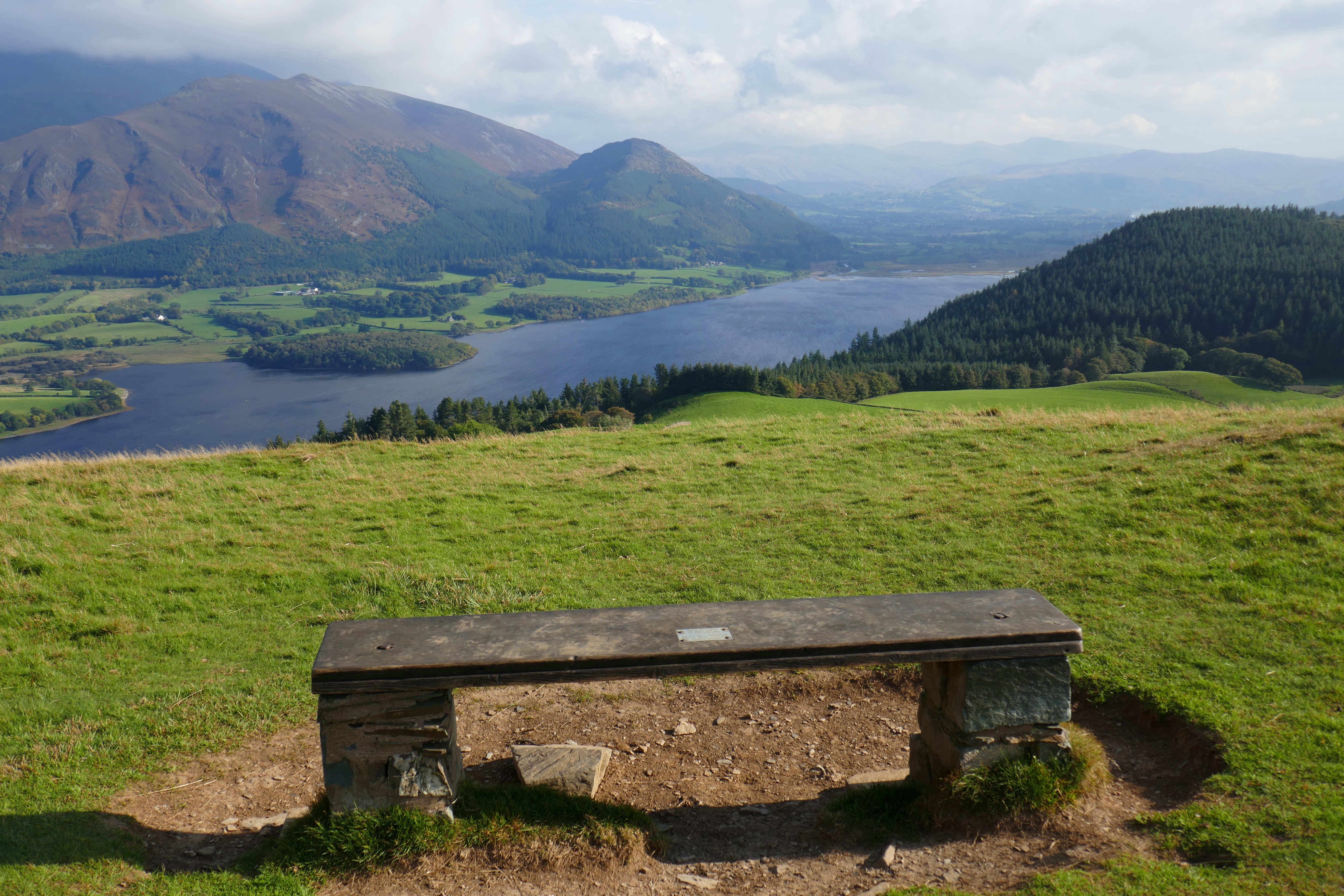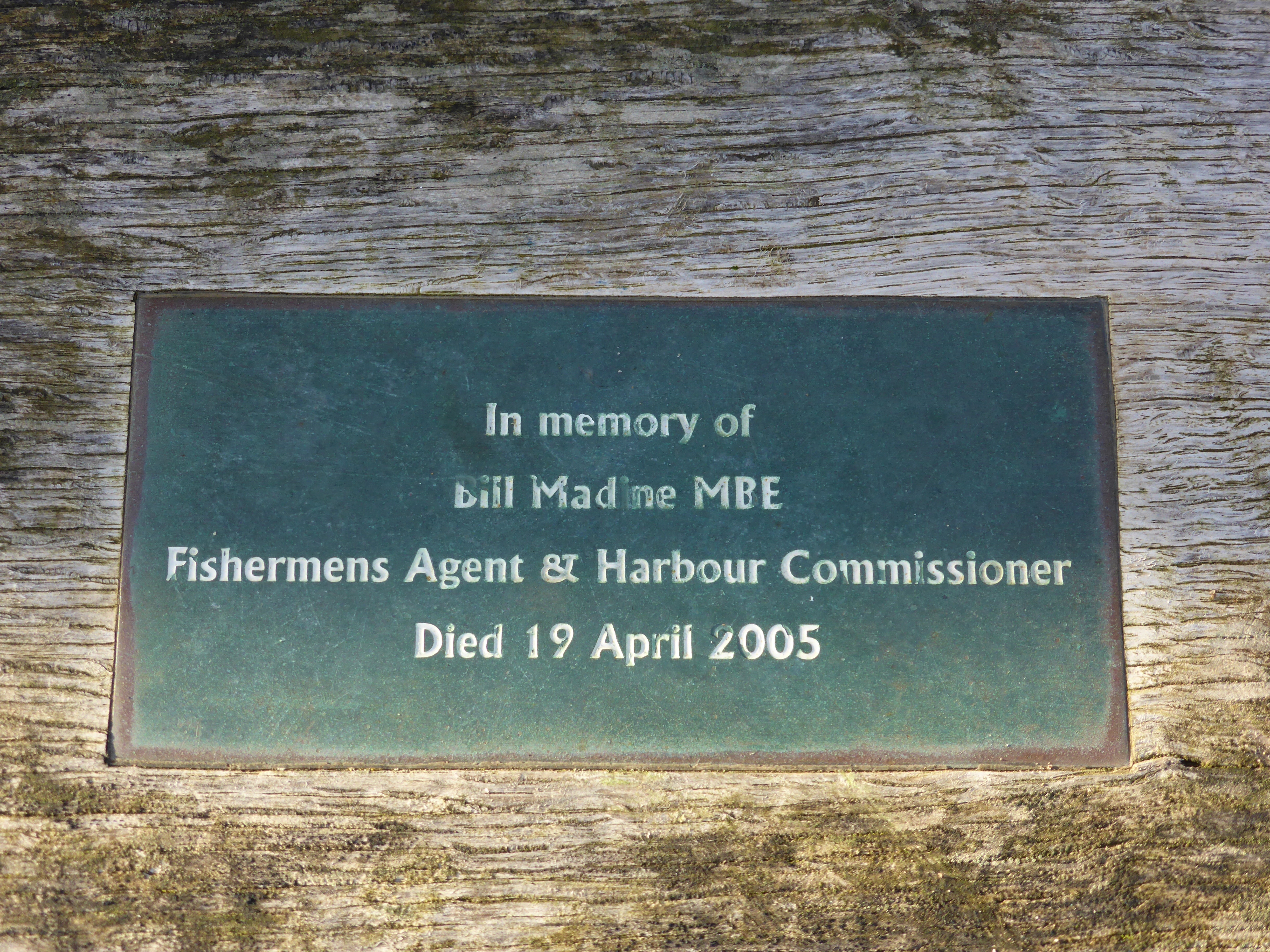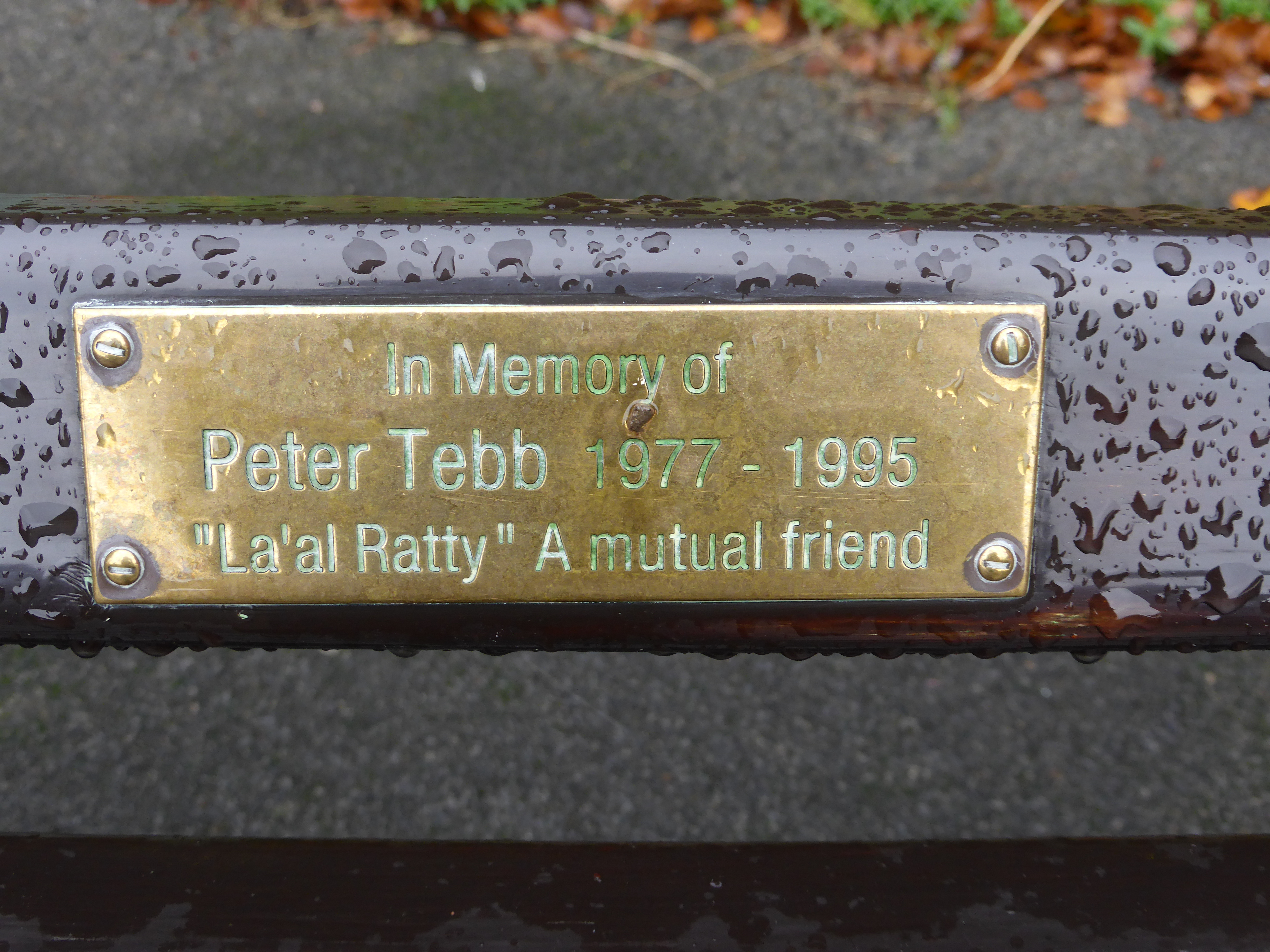Pooley Bridge is a charming and bustling village at the northern end of Ullswater in the Lake District, where the River Eamont meets the lake. We have occasionally stayed at a campsite here and walked over Askham Fell to find the small stone circle, The Cockpit and continued to Askham village or the higher fells. As you climb up the lane the views over Ullswater open out and on a fine day this is a fabulous place to be and the perfect spot for a memorial bench.

The quote on the bench is from Lines Composed a Few Miles above Tintern Abbey, On Revisiting the Banks of the Wye during a Tour. July 13, 1798 by William Wordsworth and the full poem can be read here. The poem’s title is often, not surprisingly, abbreviated to Tintern Abbey although that building is not mentioned in the poem. In 1798 Wordsworth visited the Wye Valley and the Welsh borders on a walking tour with his sister Dorothy. His first visit had been five years earlier and this is a poem is, at least in part, about memories and how they sustain us in later life.
May I behold in thee what I was once,
My dear, dear Sister! and this prayer I make,
Knowing that Nature never did betray
The heart that loved her; ’tis her privilege,
I notice the bench appears to be in good condition and assume it was erected after Margaret Little’s death in 2015 to remember the two of them as it is many years since Dick Little died in 1991. I like to think that Dick and Margaret Little were perhaps lovers of Wordsworth’s work and how he used nature as a theme in his consideration of spiritual and emotional development. I also like to think that they got to enjoy the panoramic view Over Ullswater once in a while during their lives.

IN LOVING MEMORY OF DICK LITTLE (1915-1991) AND MARGARET LITTLE (1920-2015)
NATURE NEVER DID BETRAY THE HEART THAT LOVED HER







